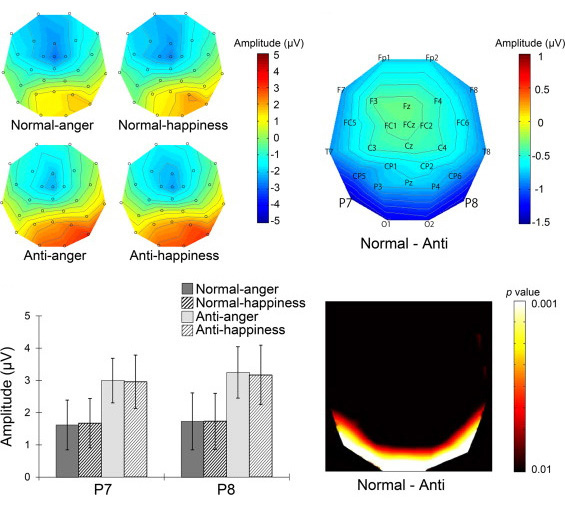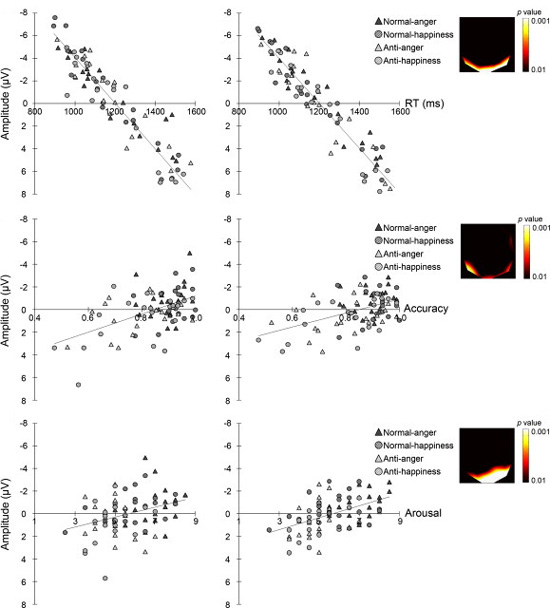SATO Wataru Laboratory
Electrophysiological correlates of the efficient detection of emotional facial expressions
(Sawada, Sato, Uono, Kochiyama, & Toichi: Brain Res)
Behavioral studies have shown that emotional facial expressions are detected more rapidly and accurately than are neutral expressions.
However, the neural mechanism underlying this efficient detection has remained unclear.
To investigate this mechanism, we measured event-related potentials (ERPs) during a visual search task in which participants detected the normal emotional facial expressions of anger and happiness or their control stimuli, termed "anti-expressions," within crowds of neutral expressions.
The anti-expressions, which were created using a morphing technique that produced changes equivalent to those in the normal emotional facial expressions compared with the neutral facial expressions, were most frequently recognized as emotionally neutral.

Behaviorally, normal expressions were detected faster and more accurately and were rated as more emotionally arousing than were the anti-expressions.
Regarding ERPs, the normal expressions elicited larger early posterior negativity (EPN) at 200-400 ms compared with anti-expressions.
Furthermore, larger EPN was related to faster and more accurate detection and higher emotional arousal.


These data suggest that the efficient detection of emotional facial expressions is implemented via enhanced activation of the posterior visual cortices at 200-400 ms based on their emotional significance.
Return to
Recent Research.
Return to
Main Menu.


